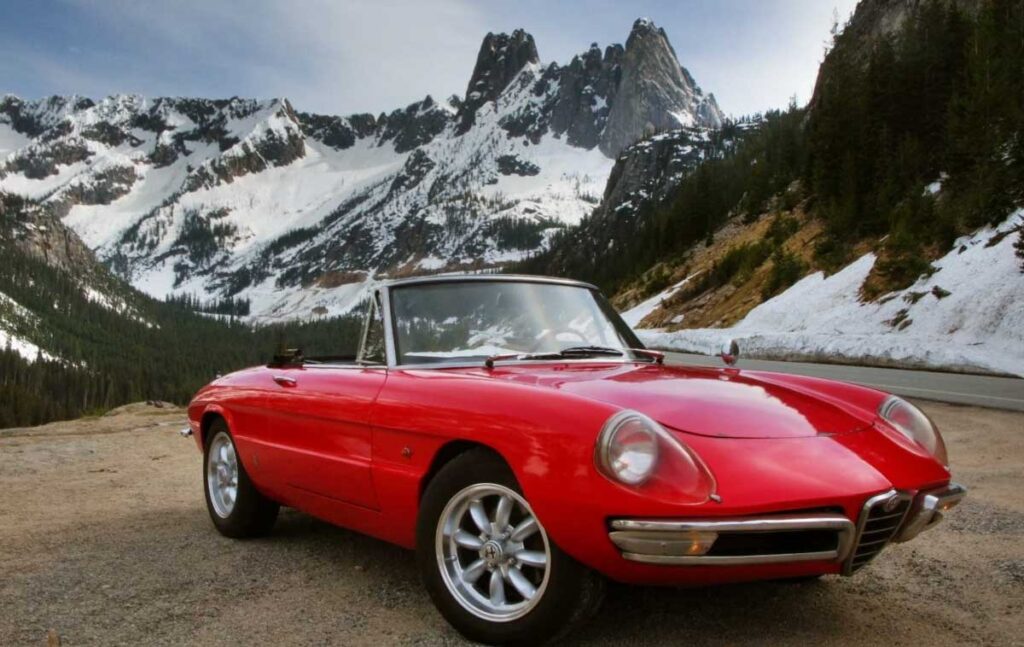Imagine being an ordinary bloke whose lifetime hobby has been old cars. Right now I own three collectibles plus a 2017 Leaf for daily driving and a 2005 CR-V for houseguests. There is a certain pleasure in buying a distinctive car at the bottom of the depreciation cycle when it is at risk of facing the crusher or being sold off for parts. Instead, one rescues it and begins the process of restoring it to its former glory. Rebuilding the mechanicals, properly repairing the damage and corrosion that comes with almost every old car, and finally reupholstery. new paint, new tyres and it’s ready to register and take for a glorious Sunday drive to the meetup with others who share the same passion. I’ve saved dozens of rare and collectible cars in this way, and I do it for the pleasure of it, not the money (the worst thing a collector can do is keep track on the dollars spent and the hours invested). But since moving to NZ, it’s become a lot harder.
To register a collectible, it must undergo a $500 VIN inspection. And it instantly fails because there is evidence of repair and fresh protective undercoating. Of course it fails, it was just the subject of a $50,000 restoration. Off it goes to the repair certifier who first demands all the new undercoat and paint is blasted off. Then more demands come, and the panel beater gives an estimate of $10,000 to get the signoff. And at the end, I have to pay an additional $500 to repeat the VIN inspection and hope they don’t find something new because they have no understanding of how a 55-year old car was manufactured by Italians back in the day.
That’s me, just another car collector driven to utter frustration by the system. Except that unlike most collectible car owners who either fork out the money or quit, selling the car overseas or taking the car home and storing it in a barn, I decided enough is enough. With a new government in place, and a new Ministry of Regulation, a few of us decided to start a petition to get rid of these stupid rules. Thousands signed it, almost all of them Kiwi collectors equally fed up with the system. The Federation of Motor Clubs took notice and reached out, because the petition was in alignment with their aims.
So now there is some hope. Maybe I can get this 55 year old car on the road after all. If I can’t, it will be listed on Bring A Trailer (BAT), with the price including shipping to the US, UK or EU, where they want to see more collectibles and make it easy to get them on the road.
My name is Claude and I brought my car collection with me when I moved to New Zealand in 1997. The 1966 Bristol 409, 1979 Alfa 2000 Spider and 1982 G-Wagon made it through under the old VIN rules and all three are still on NZ roads. The 1970 Bristol 411 got caught in the new VIN rules and after spending thousands on VIN compliance, tearing apart the recent $50,000 investment in restoration and suffering considerable damage in the process (a customer lost control of their car at the panel beaters working with the repair certifier, crashing into the 411 and doing $20,000 in damage, but saving the panel beater’s life), I gave up and sold it to a wealthy collector prepared to pay the certifier the proverbial pound of flesh.
Seeing the handwriting on the wall, I didn’t even try with the 1955 Bristol 405 Drophead, one of 43 ever made; the only one in New Zealand. I sold it to a London collector who had shipped back to the Bristol Cars factory where the same man who built it in 1955 (yes, he was still there, as well as his boss Sid Lovesy, Factory Manager who was born on Armistice Day 1919) rebuilt it to as-new condition. The car was saved but NZ lost a very rare collectible.
I had begun restoring the 1969 Alfa Spider in Auckland because at that time, Auckland (and elsewhere in NZ) had some of the world’s best – including Alan Bowden making original panel floor pans otherwise unavailable anywhere. But the restoration was not complete when the new VIN regulations were adopted. Having just gone through the experience with the 411, I gave up, towed the Spider home where it has sat for 20 years now.
I refuse to have a certifier require I undo the work done, and demand invasive cutting to earn a certificate. If NZ does not change the rules, I either will sell it on BAT, or ship it to the UK where I will garage it with relatives and use it as a summer car to tour the back roads of Britain and mountain passes of the continent. In the UK it will be exempt from road tax, no MOT (WOF) and legal to drive in ULEZ without the fee.
I am one of 200,000 Kiwis who preserve motoring history. We add $16.5 billion to the economy. We vote. Our vehicles have a light carbon footprint because we drive them far less and amortised their manufacturing footprint over ever-increasing decades. We preserve a living history and give people joy to see vehicles of yesterday. For the young especially, it is a wonder to look at a machine with nary a sensor in sight. The mechanical genius of the 20th century is a marvel that young people appreciate, knowing one day they will inherit these collectibles. The owners are custodians of mechanical machines that outlast those who cherish them.
But for this to happen, NZ has to change its rules. Get rid of the VIN, the WOF and the road tax on collectibles, and allow their owners to preserve NZ’s history. And that’s why this web site exists.

